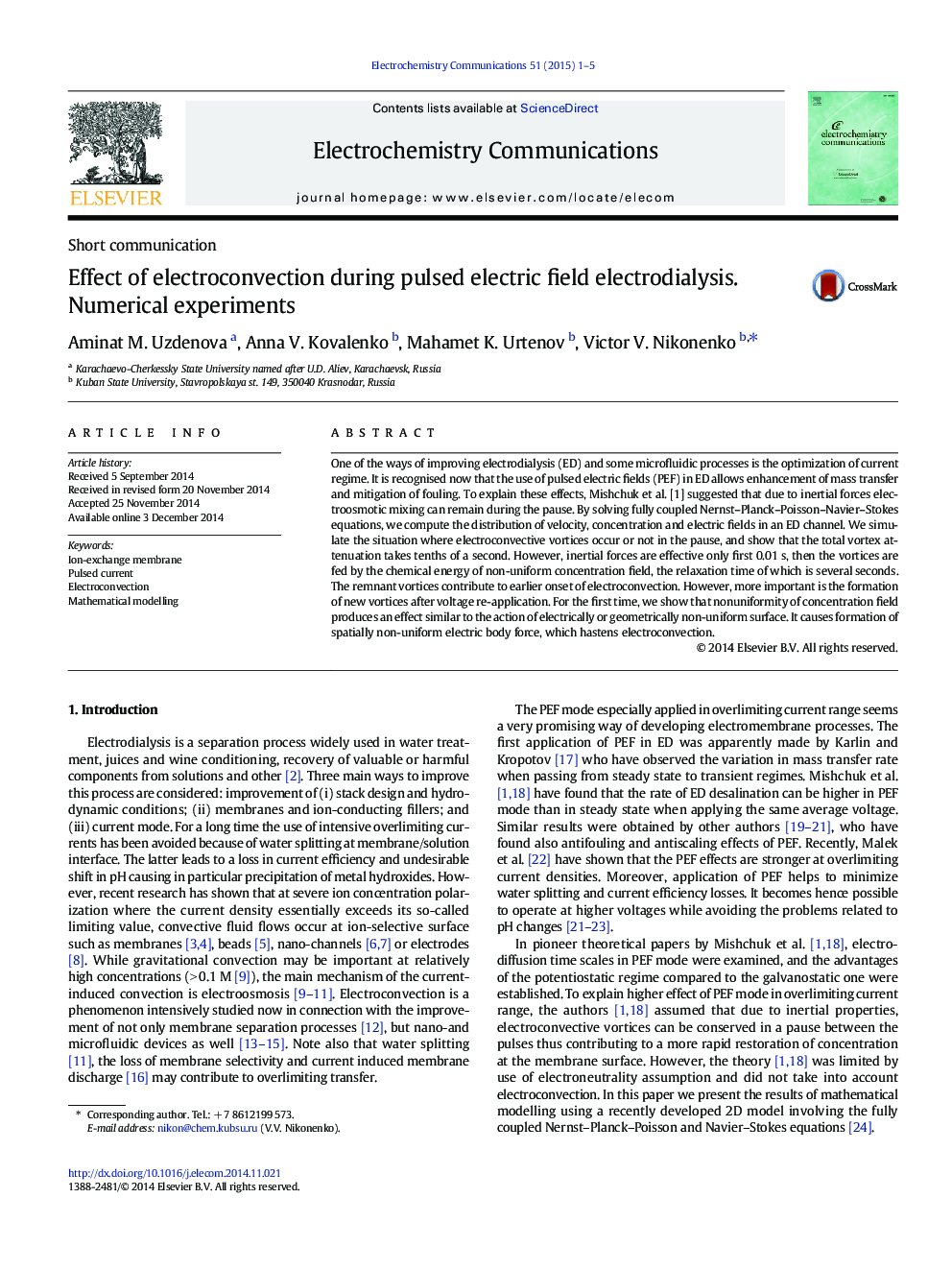| Article ID | Journal | Published Year | Pages | File Type |
|---|---|---|---|---|
| 178951 | Electrochemistry Communications | 2015 | 5 Pages |
•Vortex lifetime under zero voltage is essentially higher than it can be expected from the effect of inertial forces.•Nonuniform concentration field supplies energy for feeding electroconvective vortices during a pause.•Nonuniform concentration field causes spatially nonuniform electric body force, like electrically heterogeneous surface.•Remnant and newly generated seed vortices contribute to earlier onset of electrokinetic instability.
One of the ways of improving electrodialysis (ED) and some microfluidic processes is the optimization of current regime. It is recognised now that the use of pulsed electric fields (PEF) in ED allows enhancement of mass transfer and mitigation of fouling. To explain these effects, Mishchuk et al. [1] suggested that due to inertial forces electroosmotic mixing can remain during the pause. By solving fully coupled Nernst–Planck–Poisson–Navier–Stokes equations, we compute the distribution of velocity, concentration and electric fields in an ED channel. We simulate the situation where electroconvective vortices occur or not in the pause, and show that the total vortex attenuation takes tenths of a second. However, inertial forces are effective only first 0.01 s, then the vortices are fed by the chemical energy of non-uniform concentration field, the relaxation time of which is several seconds. The remnant vortices contribute to earlier onset of electroconvection. However, more important is the formation of new vortices after voltage re-application. For the first time, we show that nonuniformity of concentration field produces an effect similar to the action of electrically or geometrically non-uniform surface. It causes formation of spatially non-uniform electric body force, which hastens electroconvection.
Graphical abstractFigure optionsDownload full-size imageDownload as PowerPoint slide
